This website will come to an end in April 2026.
The information on this site is now available on Hugh360.co.uk.
The World of Panoramic Photography …
Panoramas are a great way to visually convey information about a place, venue, property, etcetera. They are relatively straightforward to create from images from just about any camera, with the help of low cost software.
Then there are 360° Panoramas where the viewer can look all around the image using simple mouse controls. These are the next best thing to actually being on site as you can see detail that could easily be missed with single images or a verbal description. To get the best results for these 360° panoramas does require more specialist equipment and developing new skill sets, but today there is a myriad of dual and multi-lens cameras that enable anyone to enjoy this fascinating activity. The continued evolution of the technology means that the hardware and software continues to become ever more available and affordable.
I find creating panoramas rewarding and recent projects have taken me to locations that I perhaps would not have otherwise visited. Locations can be challenging, especially where a lot of people are moving about and it is important to retain a low profile, and delivering a quality product brings its own satisfaction to the task.
It is the age of digital photography that makes panoramic photography practical, both in the creation of the panoramas and in displaying and distributing the results. Before the digital age prints were made taking care to match colours and the panorama constructed by ‘tearing’ the prints to get a fathered edge and carefully pasting the photographs together in the same way as mosaics were made from aerial photographs. This time consuming process did not always produce a satisfactory result although there were some ingenious solutions which were usually expensive. Today, software developed by some very clever people stitch and blends the images to provide seamless interactive panoramas and provide tools for dealing with situations such as movement between exposures.
In the mid 1970s I was looking for a way to measure rooms using photography and successfully patented an “Optic for Instantaneously Photographing an Horizon of 360°”. At the time both the personal computer and digital photography were still ‘science fiction’ but as these technologies developed and became available so to did the world of 360° Panoramic Photography. Today this is a world we can utilise and enjoy without having to make a huge investment financially or in time.
If you would like to communicate with me regarding this fascinating and useful subject my contact address is 360musafa@gmail.com.
 |
PaMe – Measure from 360° Panoramas Some notes on using PaMe. PaMe is straight forward to use with ‘on screen’ instruction and good tutorials so there is NO ‘steep learning curve’. PaMe Light is excellent for experimenting with the application before committing to purchase PaMe Wizard. |
||
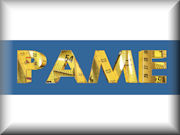 |
Use 360° Panoramas for ‘Real Life’ Measurement PaMe provides two applications for getting measurements from 360° Panoramas. PaMe Wizard is a Krpano add-on providing a ‘measure tool’ in a ‘Krpano driven’ Virtual Tour. This full version contains four ways of measuring, with the ability to save the calibrations (which can be ‘locked’) and provide ‘real time’ measurements. PaMe Light is a web based tool that allows you to just drag and drop your 360° Panoramas from your desktop. This light version has three ways of measuring. |
||
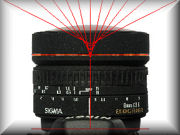 |
Finding the Nodal Point of a Lens For a lens to be used effectively for Photographic Intersection the location of the Front Nodal Point must be accurately determined. |
||
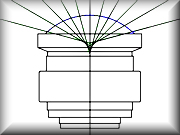 |
The No Parallax Point Some notes on the No Parallax Point and using it for 360° (Spherical) panoramas. |
||
 |
The Nodal Point The case for the Nodal Point and usage of the term. |
||
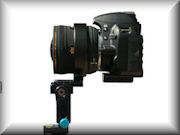 |
Making the Panoramas If a picture is worth a thousand words then a panorama must be worth ten thousand, especially a 360° interactive panorama where you can look all around, but how are they created? |
||
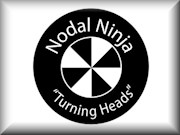 |
Nodal Ninja Nodal Ninja is a specially designed spherical tripod head allowing the photographer to adjust a camera and lens so the “entrance pupil” (front nodal point) is exactly over its correct rotational axis. Their web site states “The lightest smallest panoramic tripod head on the market today. Nodal Ninja is a solution for both amateurs and professionals alike that seek precision, portability, reliability as well as top notch support.” |
||
 |
Measurements from 360° (Spherical) Panoramas 360° Panoramas have properties that can enable Angles (both Horizontal and Vertical) to be derived from various projections in the same way as using a Theodolite. The Angles measured from two or more 360° Panoramas can be used to derive Measurements and Co-ordinates. |
||
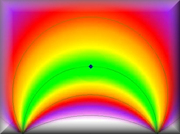 |
Accuracy for Intersection Solutions The accuracy for a point measured using an Intersection method is determined by three inter-related factors: the separation of the Stations (Base Line), the Angle of Intersection and the Precision of the Angular Measurements. |
||
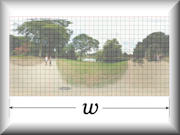 |
Equirectangular Size and Accuracy For any application using photographs for measurement (Photogrammetry) the size and resolution of the image has an impact on the accuracy of the results. When using 360° Panoramas for measurement the size or the Equirectangular projection, and projections derived from it such as Cube Faces, Sphere, Little Planet, excetera, will impact on the accuracy of the results. |
||
 |
Single Lens v Multi-lens Cameras for Accuracy Today there is a plethora of multi-lens cameras for capturing 360° panoramas which have the advantage of a single shot rather than taking a set of shots, but would these have the accuracy required for measurement as there are two fundamental differences between the two methods. Tp make panoramas with a camera with a single lens it is usually mounted on a panohead and rotated about the NPP but with a multi-lens camera this is physically impossible. |
||
 |
Samsung Gear 360 + Insta360 ONE X The result of the investigating the accuracy of using a Samsung Gear 360 for measurement, where the Samsung Gear 360 was rotated around its central vertical axis and stitched with PTGui, which provided a more accurate result than combing the hemispheres with ActionDirector, raised the question “Would a better result be achieved if the Samsung Gear 360 was rotated about the NPP of the lenses?” |
||
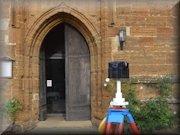 |
Using 360° iSTAR Panoramas to add Detail to an HDS Point Cloud Real world colour can be added to the points in a Point Cloud from co-centric 360° (spherical) panoramas and some users have found that it is also beneficial to take additional 360° panoramas. This task takes this one stage further and uses 360° panoramas to add detail to a survey initially made with an HDS Scanner. |
||
 |
Using Panoramas to add Colour to HDS Point Clouds The “native” colours for an HDS (High Definition Survey) point cloud are based on the reflectivity of the surface the measurement is made to and are determined by the intensity of the received reflected laser beam. Whilst this information is useful in its own right it is often desirable to have the points with their “natural” (RGB) colours. This is an overview on using 360° Panoramas to add natural colour to an HDS Point Cloud. |
||
 |
The Use of Spherical (360°) Panoramas for Photogrammetry Spherical Panorama projections are suitable for the extraction of measurements to compute the 3D co-ordinates for points from two or more panoramas. The mathematics involved is much more straight forward than that required for using photographs for Stereo Photogrammetry and Photographic Intersection Horizontal and Vertical angles are easily measured in an Equirectangular projection to provide the same data as if a theodolite was used at the same location. |
||
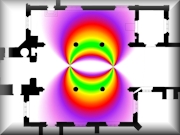 |
Spherical Panoramas for Photogrammetry 3D measurement techniques are readily available, but low cost solutions are needed for applications where only a small quantity of data is required. Measurements can be made from Spherical Panoramas using available techniques, but these are time consuming, error prone and laborious, so this is an appeal to those with skills in software development in the fields of digital imaging and the mathematics to compute intersecting rays in space to provide a viable and cost effective solution. |
||
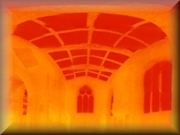 |
Using Thermal Images to create a 360° (Interactive) Panorama for use with HDS Point Clouds A report on an investigation into the possibility of using images from a Thermal Imaging Camera to create a 360° (Interactive) Panorama to generate the Cube Images to attach the colours from the thermal images to an HDS (High Definition Survey) Point Cloud. |
||
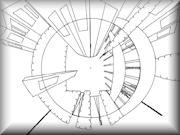 |
Panoramic Photography As A Survey Tool |
||
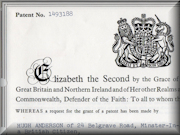 |
Patent No. 1493188 |
||
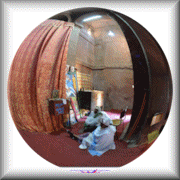 |
360° Panoramas |
||
